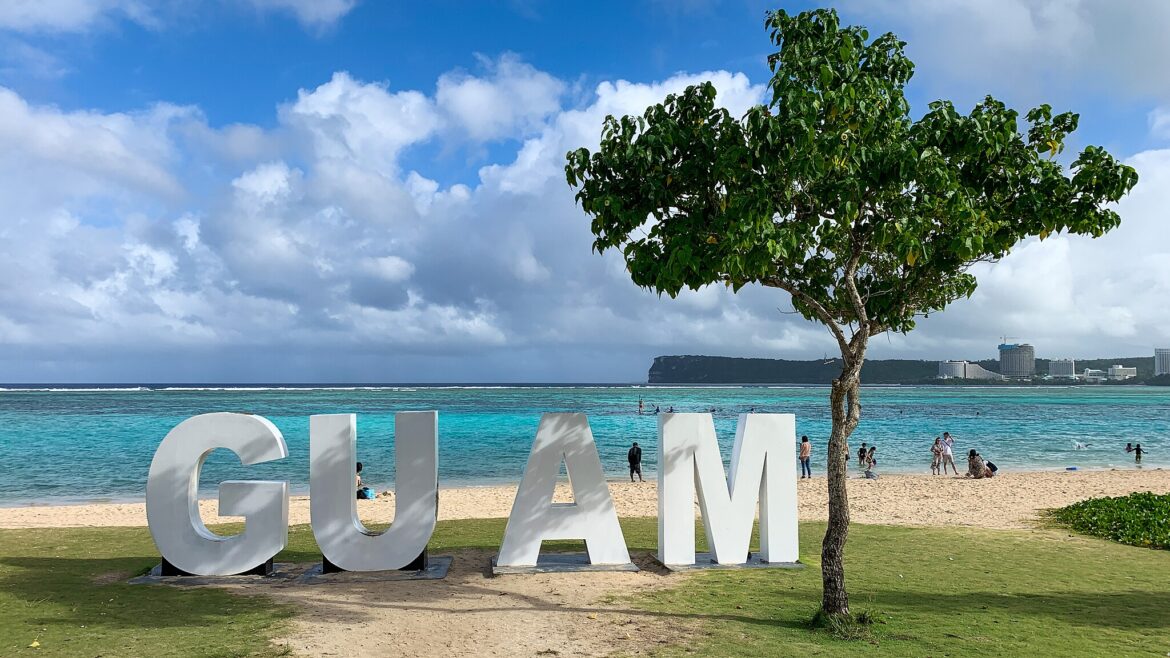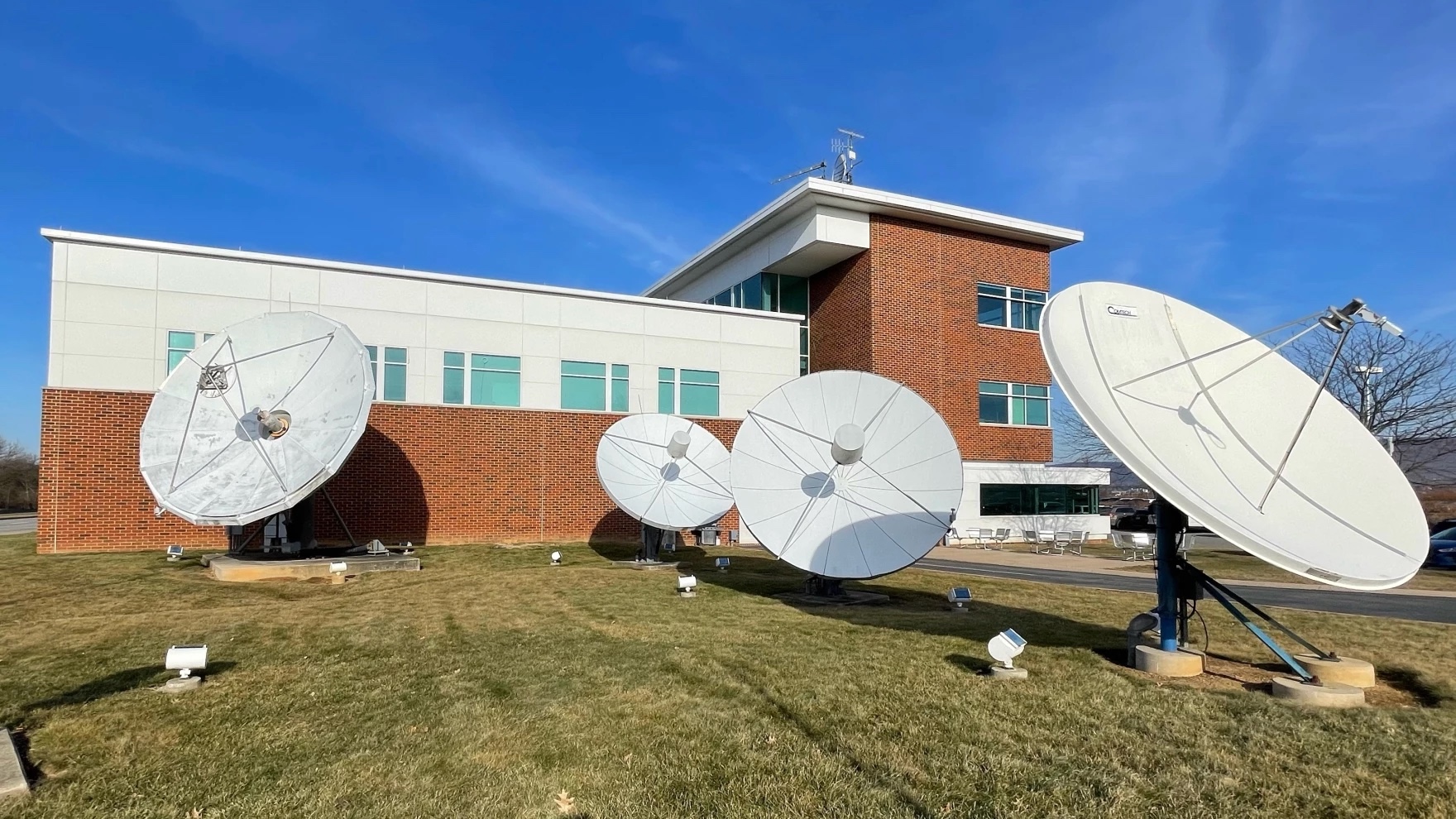Covering Guam’s military, politics and culture: Inside KPRG’s first newsroom

Daniel Ramirez / CC BY 2.0, via Wikimedia Commons
Ypao Beach in Tunom, Guam.
What do you know about Guam? Read the latest international news headlines about the U.S. territory in the western Pacific Ocean, population around 173,000, and you’ll be told it’s a land of spiders and snakes, the site of a growing U.S. military presence and, with the neighboring Northern Mariana Islands, one of the Indigenous homes of the CHamoru.
Despite this range of news stories about Guam and the importance of public media to the region, the island has never had a public radio newsroom — until now. KPRG-FM 89.3, which has broadcast since 1997, has never produced news before, though it has been a long-held ambition, particularly for GM Chris Hartig.
The station fundraised over five years, including saving COVID support funds and growing local support, to start building its newsroom in August 2023.
The island has seen growth in digital media offerings over the past 20 years but a decline in overall news options. The online-only Pacific Daily News, print/online Pacific Island Times and locally owned newspapers Guam Daily Post and Mariana Business Journal serve the island, alongside PBS Guam and commercial TV and radio broadcaster KUAM.
Leading KPRG’s new newsroom is News Director Naina Rao, a journalist born and raised in Indonesia, who discovered her passion for public radio and podcasts while studying journalism at Michigan State University.

“Many of my classes concentrated on TV or print, but I didn’t feel a connection,” says Rao. “Radio was able to touch me, and all journalists want to produce stories that hopefully touch someone.”
After graduating in 2018, Rao worked for Wyoming Public Radio and as a freelancer, producing for Feet in 2 Worlds and Youth Radio (later YR Media). After leaving Wyoming Public Radio, she worked as a producer for NPR’s Culture Desk and Morning Edition. But how did she end up in Guam, 7,438 miles from Michigan and 2,333 miles from Indonesia?
Rao had been thinking about moving home and had applied for jobs in Indonesia and the U.S. after graduation. In May 2023, as she approached the end of a contract and the ninth anniversary of arriving in the U.S., a friend and mentor contacted her about a new opening with NPR member station KPRG to create a news team.
“The relatively unknown-to-me location and the fact that Guam was ‘American,’ but not like the America I’ve been exposed to, piqued my interest,” says Rao, adding that Guam’s predominantly Indigenous population and Filipino community appealed to her. “I was curious who and what I’d be like, practicing journalism in a ‘different’ America.”
Rao spoke with community members and journalists and had a group interview with the station’s staff during a two-month process.
“This was different — the chance to build and kickstart a one-of-a-kind newsroom for Guam and Saipan [the largest of the Northern Mariana Islands],” she explains. “There’s no blueprint to follow. I couldn’t put this position and place in reference to another experience in my career, so I said yes.”
First steps
Rao began by getting to know Guam and KPRG’s audiences. She met journalists covering Guam and neighboring islands, attended local events and got to know community members. Based on her research and networking, she divided coverage plans into three buckets: the military, Pacific-region politics, and current affairs, including local politics, health and science, and the environment.
“My general manager’s vision is to bring the world to Guam and bring Guam to the world,” she says.
From covering these topics, Rao says she was able to deepen her knowledge about Guam and its neighbors, including Palau, the Northern Mariana Islands and the Federated States of Micronesia. Some of her favourite work for the fledgling newsroom includes booking, interviewing, scripting and producing a three-part series on Palau featuring Palau’s president, Surangel Whipps Jr.
She was also proud to provide wider coverage for NPR of Wikileaks founder Julian Assange’s hearing in Saipan in June and, more locally, to investigate why the start of the new school year is regularly delayed in Guam.
A new newsroom needs staff and recruitment, and learning the management ropes has been the biggest challenge in Rao’s first year. She soon realized she couldn’t be a manager and reporter at the same time but needed to dedicate herself to one role. Using stringers was also not an option because they could not provide hosting cover.
Beginning the process in February, the newsroom now has an additional part-time reporter and fill-in host and a part-time reporter dedicated to covering Saipan. Neither had previous radio experience, but one is an established newspaper journalist and the other a journalism student.
“I compare what I’m doing here to missionary work in the sense that the idea and knowledge of public radio isn’t well known in Guam,” says Rao. “I realized I was not only hiring people to help but introducing this new idea into society.”
The importance of accuracy and capturing ambient sound while on location, for example, needed to be explained to potential hires.
Rao’s original goal was to introduce a daily local news spot — KPRG had none. With a team, she initially hoped to hand over production of more of the daily news spots and a feature every other week but has scaled back this goal. She currently still produces four spots a week herself. They air weekday mornings at the top of the hour at 7 a.m. and 8 a.m., ranging from 60 seconds to 2 minutes and 30 seconds in length.
“When I became a manager, I learned that everyone has different work capacities, that it’s my responsibility to adjust and assess our resources,” she says. “My expectations and ideas of what we should be doing changed.”
Funding and reporting challenges
Alongside recruitment and management, funding public radio in Guam and access to sensitive sources are also challenging. For example, while the U.S. reportedly owns 25% of Guam’s land, getting hold of military bases for comment is always hard, says Rao: “You always get the runaround.” Reporting on the military also requires sensitivity. Increased militarization of the islands is a polarizing topic amongst listeners and residents. Reporting on that and capturing those voices has sometimes led to friction, she says.
Otherwise, audience feedback since launching the newsroom has been positive, says Rao: “People in Guam think it’s good to get quality national news locally. They’ve been very supportive of what we’ve been able to produce.”
“Public media plays a crucial role in Guam and the Pacific region, serving as a vital source of information, education and cultural representation for our island community and most especially the underserved,” says Ina Carillo, GM of PBS Guam.
There are growth opportunities for public media in Guam, she explains, through community engagement, trusted programming and digital platforms to reach new audiences. Funding, however, remains a significant challenge.
PBS Guam’s attempt to launch a news program in 2022 was hindered by high operational costs and difficulties in securing sustainable funding and underwriting, says Carillo: “While TV broadcast is different from radio, I can see some of those issues appearing, but I’m hopeful for a better community buy-in and greater underwriting support for KPRG.”
Pacific media development specialist Shailendra B. Singh agrees there are opportunities for public radio news in Guam and the region. Collaborating on news-sharing with regional and international counterparts could boost coverage, he says.
Public radio stations in Guam and the Pacific Islands more generally should seek out funding opportunities for training, development and capital projects “from foreign donors who are increasingly supporting media capacity–building in the Pacific due to current geopolitical realities,” Singh adds.
It also requires government support and investment, he says. Both PBS Guam and KPRG receive funding from Guam’s government. For KPRG, this funding recently increased by $80,000 after an extended period of flat support.
Guam can be very transient, says KPRG’s Hartig, with “people leaving for better opportunities, school, joining the military, taking care of a family member, or here for a limited work contract.” This is one factor that makes fundraising “a constant struggle”: “Our membership typically flips every three years or so, causing a constant struggle to obtain new members to replace those who have moved away.”
A ‘powerful opportunity’
Rao’s contract with KPRG is for two years with the option to renew for a third year in 2025. For now, her immediate sights are on covering the impact of the U.S. presidential election on Guam’s citizens.
She started a nascent Instagram account for the news team to promote its new service to audiences but has not been able to keep it updated owing to the demands of managing, training, reporting and producing seven days a week. “The hope is once my reporters are fully trained, I can shift a little bit of my focus and responsibility to figuring out how KPRG News can start building a digital presence to let listeners, new and old, know that we’re here,” says Rao.
In the year ahead, she’d like to launch a weekly news podcast: “It’s a good goal with the resources and capacity we have. If we can produce a five-minute podcast of what’s happening in Guam, Saipan and the region, I’ll be very happy.”
A major perk of running a newsroom from a Pacific island is bringing a unique perspective to often overlooked or misunderstood stories through local voices and insights, rather than through a mainland filter, says Rao. “We have a powerful opportunity to highlight issues that are incredibly relevant to our local communities but have global implications, like climate change, military presence, cultural preservation and political autonomy,” she says.
“There’s a real responsibility to advocate for our region, but it’s also inspiring to know we can connect Guam, the Northern Marianas and other islands to broader audiences through our affiliation with NPR,” Rao adds. “There’s a strong sense of community and support here, which makes collaboration and storytelling very rewarding.”
Outside of work, Rao has taken up scuba diving since moving to Guam and appreciates the natural beauty and slower pace of life on the island: “Running a newsroom from here isn’t just about reporting the news — it’s about fostering a connection with our surroundings and representing our region with pride and authenticity,” she says.
Correction: An earlier version of this article incorrectly said that KPRG does not receive funding from Guam’s government.






